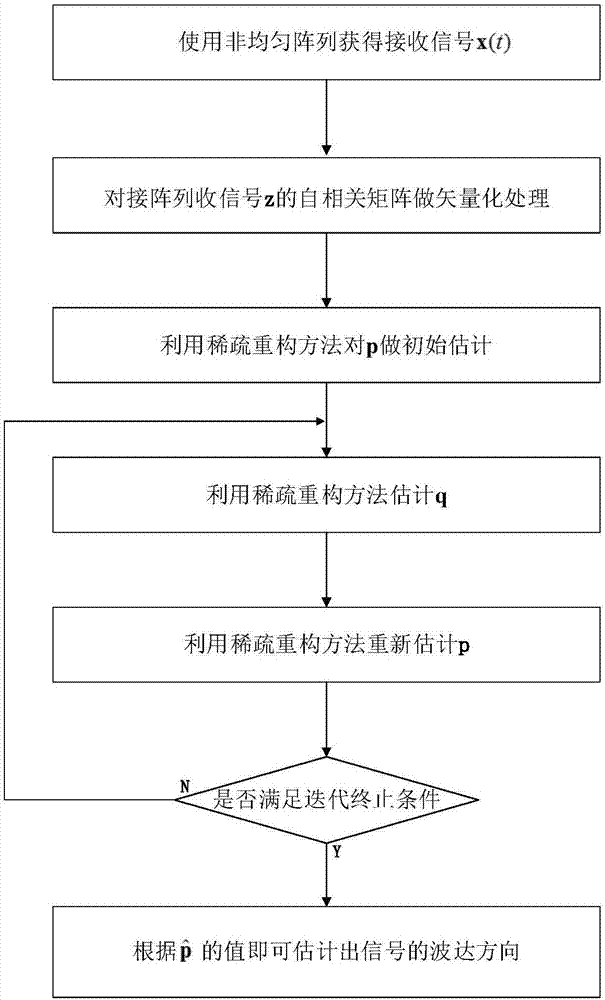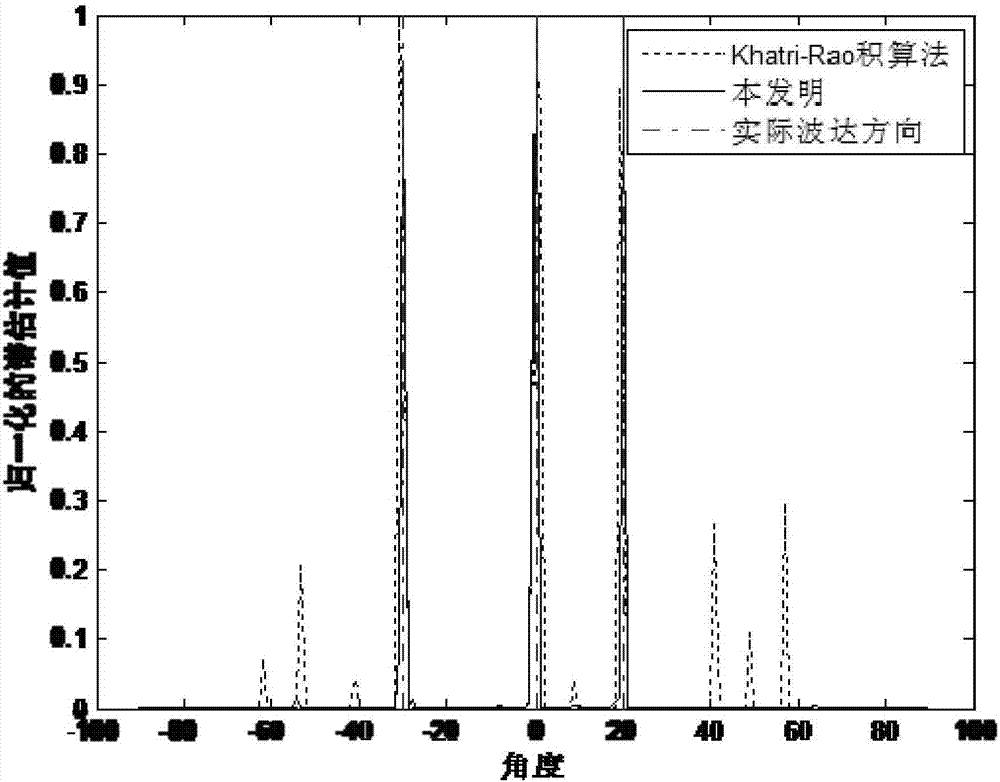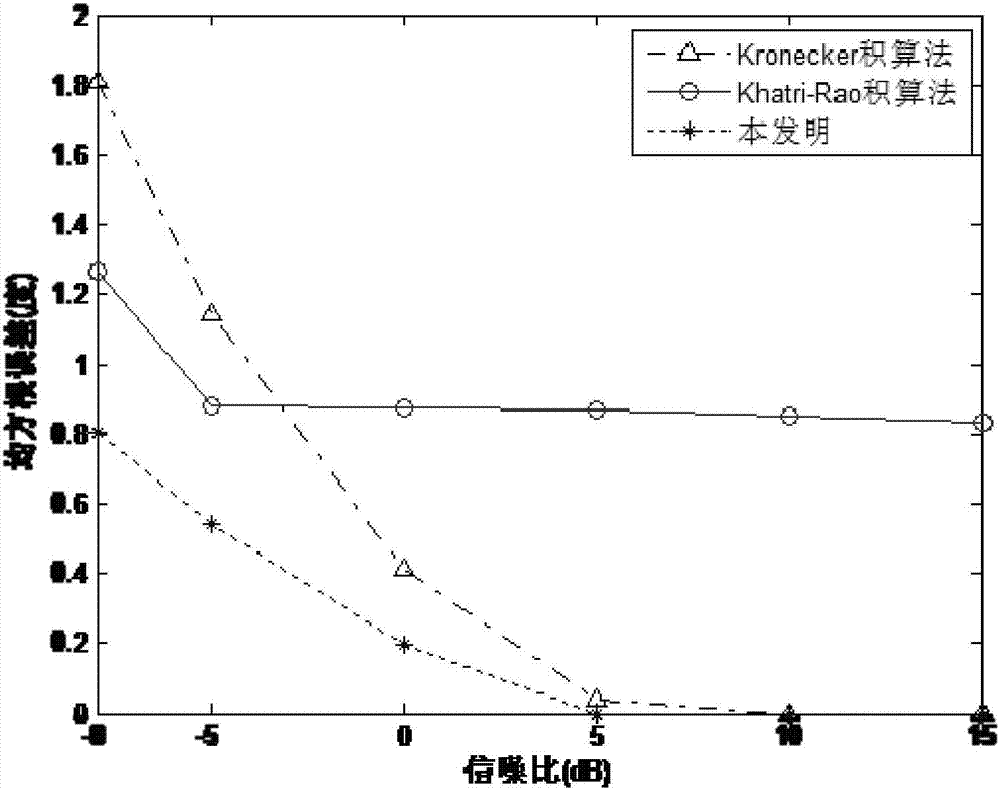Correlated/coherent signal directions of arrival estimation method based on covariance low-dimension iterative sparse reconstruction
A direction-of-arrival estimation and sparse reconstruction technology, applied to radio wave direction/bias determination systems, direction finders using electromagnetic waves, direction finders using radio waves, etc., can solve the problem of reducing covariance sparse reconstruction algorithm calculations Complexity, high complexity, loss of degrees of freedom and other issues, to achieve good estimation accuracy and reduce computational complexity
- Summary
- Abstract
- Description
- Claims
- Application Information
AI Technical Summary
Problems solved by technology
Method used
Image
Examples
Embodiment Construction
[0031] The present invention will be described in further detail below in conjunction with the accompanying drawings and embodiments.
[0032] This embodiment provides a method for estimating direction of arrival of correlated / coherent signals based on low-dimensional iterative sparse reconstruction of covariance, and its process is as follows figure 1 As shown, it specifically includes the following steps:
[0033] Step 1. Use a non-uniform array composed of N array elements to receive K far-field narrowband signals, and get:
[0034] x(t)=As(t)+v(t),t=1,2,...,T
[0035] Among them, x(t)=[x 1 (t),...,x N (t)] T is the received signal of the array, and v(t) is the zero-mean Gaussian white noise on the array;
[0036]
[0037]
[0038]
[0039] Among them, θ={θ 1 ,θ 2 ,...,θ K} is the direction set of K signals, A is the direction matrix, s(t) is the signal vector, s i (t), i=1,2,...,K represents the i-th spatial narrowband signal, a(θ i ), i=1,2,..., K repre...
PUM
 Login to View More
Login to View More Abstract
Description
Claims
Application Information
 Login to View More
Login to View More - R&D
- Intellectual Property
- Life Sciences
- Materials
- Tech Scout
- Unparalleled Data Quality
- Higher Quality Content
- 60% Fewer Hallucinations
Browse by: Latest US Patents, China's latest patents, Technical Efficacy Thesaurus, Application Domain, Technology Topic, Popular Technical Reports.
© 2025 PatSnap. All rights reserved.Legal|Privacy policy|Modern Slavery Act Transparency Statement|Sitemap|About US| Contact US: help@patsnap.com



